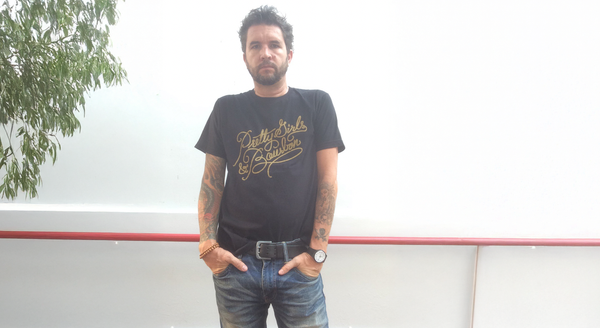Keeping Up with the Joneses

There’s a generation you’ve probably never heard of.
They’re not quite Boomers, though they grew up in the wake of post-war optimism. They’re not Gen X, though they came of age in the same era of cynicism and cassette tapes. They’re something in between - Generation Jones, born roughly between 1954 and 1965. And in many ways, they represent the clearest example of why our obsession with generational labels has become lazy, misleading, and often dangerously reductive.
My name is Christopher Smith, and I am a Jones. (I know, ironic right?)
Cultural commentator Jonathan Pontell coined the term “Generation Jones” back in 2009, to describe those who felt caught between the cultural promises of the 1960s and the economic realities of the 1970s and ’80s. They were raised on the dream of the American (or global North) middle class and entered adulthood just in time to watch it erode—recessions, inflation, oil shocks, wage stagnation. They “jonesed” for a future that never quite arrived.
But here’s the thing: they adapted. They learned to live with complexity. They traded starry-eyed idealism for pragmatic ambition. And today, they’re still working, still leading, still buying, still building.
And yet—most brands don’t know they exist.
The Invisible Middle
Generation Jones is a cautionary tale in how marketing has flattened generational storytelling into stereotype. In most campaign briefs or product strategy decks, you’ll find a neat set of cohorts: Boomers = retiring. Gen X = skeptical. Millennials = anxious. Gen Z = radical. It’s clean. It’s efficient. And it’s wrong.
Because generational identities aren’t real. They are shortcuts. And shortcuts are only helpful when they take you somewhere true.
Generation Jones reveals just how much nuance is lost when we slice human experience into 15-year chunks. A 59-year-old woman who helped her company go online in the 1990s is not the same as a 75-year-old man who once waited weeks for a fax to arrive. They’ve lived through the same decades, but entirely different timelines. A 61-year-old technologist who helped usher in the internet is not the same as a 45-year-old who grew up online. Lumping all of them together under “Boomer” or “Gen X” doesn’t just miss the mark—it misses the moment.
Especially now.
The Epilogue Opportunity
In what I call the Epilogue Economy - the rising significance of older knowledge workers, creators, and leaders in a rapidly aging world - Generation Jones stands out. They’re not slowing down. They’re pivoting. They’re launching second (and third) careers, mentoring rising talent, learning AI tools, and rethinking what success looks like in their Third Act.
They are digital immigrants fluent in analog trust. They are skeptical of fads but open to evolution. They want tools that respect their time, not just dazzle with features.
This makes them a profoundly important segment for brands, employers, and policymakers. Not because they’re a demographic box to check, but because they defy the box altogether. Their needs, values, and purchasing behaviors don’t follow generational patterns—they follow contextual ones. Life stage. Career arc. Values. Losses. Hopes. Shifts. These are the signals that matter.
Which is why we need to stop thinking in terms of generational marketing, and start thinking in terms of narrative marketing.
What story is your product helping them tell about themselves? Where are they in their arc, and how can you help them move forward?
Beyond the Labels
This isn’t just about Generation Jones. It’s about all of us.
Every generation is a construct, a simplification of a far messier truth. But Generation Jones is the one that makes the cracks visible. They remind us that lived experience is more powerful than cohort definitions. That the middle child often has the best stories. That the people we overlook may be the very ones holding the system together.
So the next time you’re segmenting your audience, writing your copy, or designing your onboarding flow—ask yourself:
Are you marketing to a generation? Or are you speaking to a moment in someone’s life that actually matters?
What This Means for Brands and the Agencies That Serve Them
If you’re leading a brand—or building campaigns on behalf of one—Generation Jones is almost certainly missing from your strategy. Not because they’re irrelevant, but because the generational framework you’ve been handed is incomplete.
This isn’t a niche group. It’s a missed opportunity.
They aren’t Boomers fading out. They aren’t Gen X rebels. They’re the connective tissue of today’s economy—still earning, spending, leading, mentoring, launching new ventures, and shaping what success looks like in later life.
And yet, almost no one is speaking to them directly. That silence? It’s costing you. Here’s what to do about it:
1. Rewrite the Brief
Most segmentation still treats “55+” as a single, stagnant category. Want proof? Try filling out a form. Scroll to the bottom of the age dropdown. You’ll usually find: “55+”
Full stop. No nuance. No distinction between someone who’s 57 and just switched industries, and someone who’s 83 and living in a retirement village. No understanding that this range spans nearly three decades of lived difference. But a 60-year-old reinventing their career has nothing in common with a 75-year-old easing into retirement, or a 55-year-old solo traveler rediscovering independence. It’s time to move from generational targeting to transitional targeting—marketing to mindsets, not birthdates.
2. Audit Your Cast of Characters
Who shows up in your ads? Who narrates your UX copy? Who’s pictured in your customer journey maps? If they’re all 25 to 40, you’re not just alienating older customers, you’re ignoring some of your most brand-loyal, high-spending, and influential advocates. Generation Jones wants to be seen but not stereotyped. They’re not looking for nostalgia. They’re looking for relevance.
3. Design for the Epilogue Economy
Products, services, and platforms that assume aging equals decline are out of step. This cohort is healthy, tech-capable, and curious. They want tools that help them grow, not wind down. Are your offerings helping them level up, or subtly telling them to slow down?
4. Bring Them Into the Room
Your creative brainstorms, innovation sprints, and research panels are likely dominated by people under 45. But Generation Jones has lived through recessions, reinventions, analog and digital revolutions. Their lens isn’t nostalgic, it’s seasoned. Involve them early. Co-create with them. Let their lived experience sharpen your future-facing work.
5. Challenge the Age Narrative
If agencies and brands don’t break the habit of equating youth with innovation, they’ll miss the real transformation story: longevity as a creative force. The most interesting stories in culture today are not coming from the youngest. They’re coming from those who’ve lived enough to see the cycles, and are still bold enough to rewrite them.
Generation Jones is more than a forgotten cohort.
They’re a living argument against lazy segmentation, and a call to action for a better kind of marketing—one grounded in context, story, and earned insight.
You must stay relevant in a world where the average age is rising and the definitions of work, purpose, and identity are being rewritten.
If “55+” is your strategy, you’ve already lost.
The world has changed, and the story of aging is changing with it. Work is being rewritten. Identity is fluid. Purpose is elastic. If your brand still thinks in neat generational brackets, you’re designing for a world that no longer exists.
So the next time you scroll to the bottom of that form and see “55+” as your final option, remember this:
There are whole lifetimes inside that little plus sign.
And if you can learn to see them, you won’t just build better campaigns. You’ll make better companies, better cultures, and better futures. Generation Jones may have been caught between two eras. But they’re more than a bridge. They’re a blueprint.
Don’t just keep up with the Joneses. Build with them. Because in the end, they’re not the generation we missed. They’re the one we need.
Don’t know where to start with the Joneses?
Hire someone who is one. I help brands and agencies decode the Epilogue Economy, translating overlooked insight into strategy, storytelling, and solutions that actually fit the world we’re living in now.
Let’s build something future-proof.



